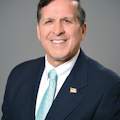How good is your case acceptance, really?
When we ask dentists to estimate their case acceptance rate, the typical response is “about 90%.” However, after 38 years of tracking thousands of doctors, we are finding that many practices are actually as much as 30% below their estimate.
Related reading:
- Practice production, prioritized: The impact of setting a daily goal
- Practice production, prioritized: Retaining current staff
- The one-day rule for overdue patients
What would cause such a wide discrepancy? Many people talk about case acceptance as if it is one thing, but in the world of analysis and practice management it’s essential to segment what you are analyzing. For example, case acceptance for single tooth dentistry or lower expense dentistry may well be around 90%, and that may be why so many dentists believe that this truly represents their average level of case acceptance. However, when segmenting the type of cases being presented, Levin Group has found that cases costing over $1,500 (even including three-unit bridges) are often accepted at a much lower rate. The economy always influences case acceptance as well. In order to get a true measure of case acceptance, the first step that every practice should take is to track case acceptance for treatment costing over $1,500. We have always believed that these cases require a different type of case presentation. Telling a patient in a hygiene room that they need a restoration or crown makes perfect sense, and the acceptance rate for this type of treatment can be extremely high.
Unfortunately, many patients then go to the front desk where they may or may not schedule, and most practices have no follow-up system. If you want to increase case acceptance, have the assistant or hygienist escort the patient to the front desk and verbally hand them off, explaining that the patient needs to make an appointment for the recommended treatment. The front desk person must then view it as their responsibility to ensure that the patient makes their appointment. They should use positive scripting to reinforce the reasons that treatment needs to happen and discuss the results that will probably occur if it doesn’t. If for any reason a patient does not schedule or later cancels the appointment, a follow-up should take place from the practice directly by phone and at the next hygiene visit. Long-term follow-up with patients who have not accepted treatment is now an essential component of the case acceptance process, and just as essential as the original case presentation itself.
Editor's note: This article appeared in the January 2023 print edition of Dental Economics magazine. Dentists in North America are eligible for a complimentary print subscription. Sign up here.
About the Author
Roger P. Levin, DDS, CEO and Founder of Levin Group
Roger has worked with more than 30,000 practices to increase production. A recognized expert on dental practice management and marketing, he has written 67 books and more than 4,000 articles, and regularly presents seminars in the US and around the world. To contact Dr. Levin or to join the 40,000 dental professionals who receive his Practice Production Tip of the Day, visit levingroup.com or email [email protected].

